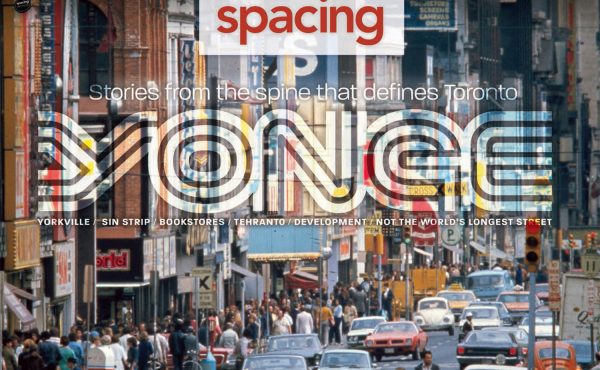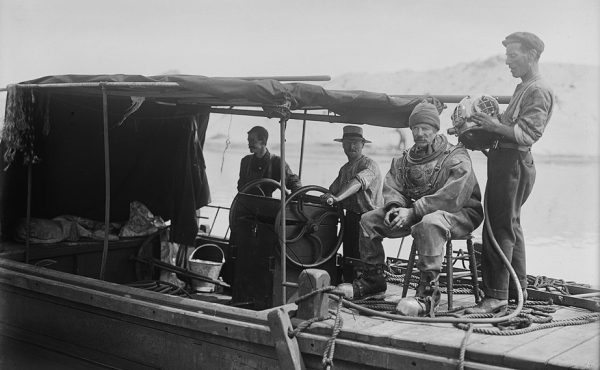 It was a Friday night in October of 1954. The rain had started coming down late that afternoon, but most people in Toronto weren’t worried. Hurricane Hazel might have killed more than a thousand people as it tore through the Caribbean and the eastern U.S., but it was supposed to have died down by the time it reached Ontario. The last official weather report came out at 9:30 that night: it would rain for a couple of hours with some strong winds, but Hazel was weakening. It sounded like everything was going to be fine.
It was a Friday night in October of 1954. The rain had started coming down late that afternoon, but most people in Toronto weren’t worried. Hurricane Hazel might have killed more than a thousand people as it tore through the Caribbean and the eastern U.S., but it was supposed to have died down by the time it reached Ontario. The last official weather report came out at 9:30 that night: it would rain for a couple of hours with some strong winds, but Hazel was weakening. It sounded like everything was going to be fine.
But it wasn’t. Thanks to a rainy autumn, Toronto’s rivers and creeks were already swollen; they couldn’t handle the extra 150 billion litres that was about to fall from the sky. All over the city, they burst their banks in the dead of night, sending roaring torrents of water flooding through neighbourhoods. Roads were destroyed, bridges washed away, homes flattened. Cars were plucked from the streets and hurled downstream. Firefighters and police officers and volunteers leapt into action — but many of them got stranded too, or were swept away by a rush of water. Word went out over the police radio: the force of the currents was so strong that rescue boats of any size were to be considered useless.
On Raymore Drive in Etobicoke, many families were already asleep when the water hit. The street curved along the banks of the Humber River just across from Weston — much of it on a floodplain. So when a crest of water surged down the river, the houses on Raymore were standing right in the way. It only took a few minutes for the neighbourhood to flood. Soon houses were floating away.
Brian Mitchell, a volunteer firefighter, was there that night. “I think some of them realized their houses were moving,” he remembered years later in a book about the storm, “but a neighbour’s house was on a solid foundation; therefore, they thought, ‘Let’s swim to the safety of the neighbour’s.’ That’s what a lot of them did. Matter of fact as the water still rose they were right up on the rooftops of neighbours’ houses, hanging onto TV aerials. Some stayed in their houses, and we could hear the screams when the houses were swept down the river with people in them.
“All hell broke loose. People were screaming, ‘Save us… Save us.’ We could get spotlights on them. We could see them… but they were just so far out you couldn’t throw ropes. We tried floating ropes to them on logs, anything buoyant. We’d grab a piece of firewood, tie rope to it, and float it upstream, hoping the current would get it over to them and they’d tie it in some way to their house… Sometimes the only possibility was to swim out with a rope. We saw feats of strength we’ve tried to reproduce since, and we can’t… But these things happened. Everybody was working so hard. And you could hear people screaming… screaming.”
“I felt so helpless,” he told the Toronto Star after the storm, “but there was nothing I could do, nothing anybody could do. The water was so deep, up to our chins, and all the firemen were weighed down by clothing and boats and equipment. It was like something out of a Cecil B. DeMille movie. The incredible roar of the water, like the roar of Niagara Falls. It was a gigantic flood with smashed houses and uprooted trees bobbing like corks, everything going down the river so fast. Houses crashing into the sides of other houses, people everywhere screaming. And then you couldn’t even hear the screams anymore.”
“The firefighters did a good job,” he said. “But for every one we got out, there was another we couldn’t get out.”
By the time the sun came up, the hurricane had killed 81 people in Toronto — nearly half of them on Raymore Drive. Neighbourhoods all over the GTA were in ruins, leaving thousands of people homeless. The clean up would be massive: the military moved in with flamethrowers to burn the wreckage; it was months before all the roads and bridges were repaired.
In the wake of the disaster, the city developed a groundbreaking new plan for flood control. They built damns and reservoirs and retaining walls, installed concrete channels, and redirected streams. Thousands upon thousands of acres of land were expropriated in order to turn Toronto’s floodplains into parkland. They didn’t want anyone living there next time a big storm hit
So that’s what happened to Raymore Drive. Those houses were never rebuilt: the blocks that were underwater are now home to Raymore Park. There’s an historical plaque there. And the ruins of a bridge that Hurricane Hazel destroyed. They’re the only signs of the horror that swept through the neighbourhood on that terrible night in October, 1954.
Cross-posted from The Toronto Dreams Project Historical Ephemera Blog.












